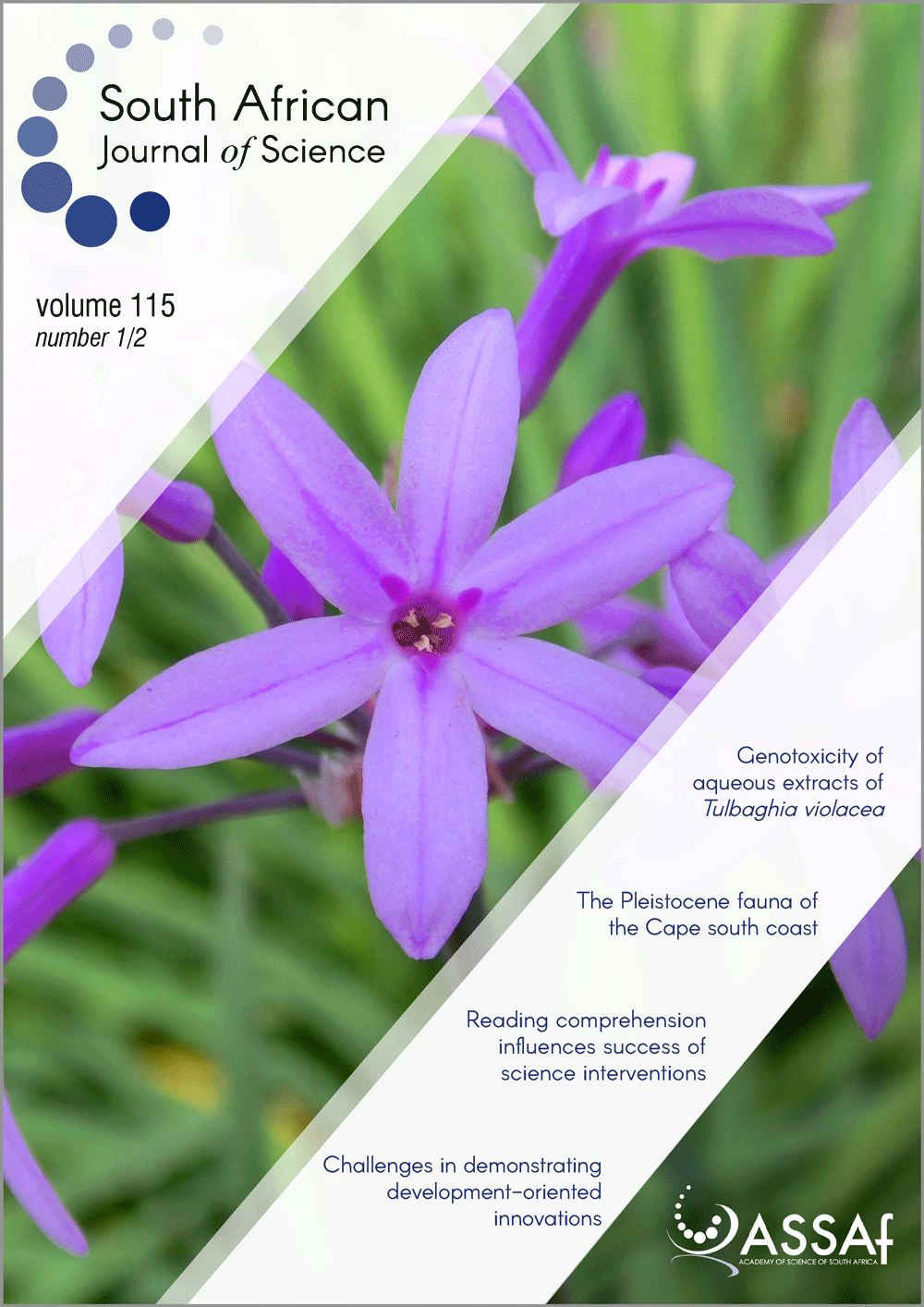The Pleistocene fauna of the Cape south coast revealed through ichnology at two localities
DOI:
https://doi.org/10.17159/sajs.2019/5135Keywords:
aeolianites, Pleistocene megafauna, fossil tracks, elephant, giant Cape horse, long-horned buffaloAbstract
East of Still Bay on the Cape south coast of South Africa lies a rugged, remote stretch of sea cliffs that expose Late Pleistocene aeolianites. A zone of dense concentration of fossil tracks occurs within this area. Two large rocks, which we call Roberts Rock and Megafauna Rock, were identified ~400 metres apart. These rocks contained a variety of trackways, individual tracks, burrow traces and invertebrate trace fossils on multiple bedding planes. Both rocks were found ex situ, but their context could be determined. Roberts Rock has subsequently slid into the ocean, and Megafauna Rock lies at the base of a coastal cliff. Probable trackmakers include elephant, long-horned buffalo, giant Cape horse, rhinoceros, medium and small artiodactyls, golden mole, birds and invertebrates. Dating studies at an adjacent site, which is comparable to the stratigraphy described here, indicate that both rocks were most likely deposited in Marine Isotope Stage 5e (~128–116 ka). Analysis and description of these tracksites confirms the potential of ichnology to complement the skeletal fossil record and to enhance the understanding of Pleistocene life in southern Africa. The ephemeral nature of such tracksites makes repeated visits to this coastline desirable, both to monitor the fate of known sites and to search for newly exposed trace fossil surfaces.
Significance:
- Roberts Rock and Megafauna Rock are two remarkable fossil tracksites on the Cape south coast, which contain tracks of four members of the Late Pleistocene megafauna. They provide a glimpse of Pleistocene dune life and suggest an area teeming with large mammals.
- These tracks were made on dune surfaces near an interface between the grassland of the Palaeo-Agulhas Plain and the inland Fynbos–Strandveld–Renosterveld. Faunal assemblages from both vegetation zones might therefore be recorded.
- The trace fossil record and body fossil record both have inherent biases, but have the potential to independently provide complementary information on palaeofaunal composition.
- The two rocks have provided the first South African records of fossil elephant tracks (as first described by Dave Roberts and colleagues in 2008), the first rhinoceros track and the first extinct giant Cape horse track, and track evidence of the extinct long-horned buffalo.
- Roberts Rock has slumped into the ocean, and it provides an example of the fate of many exposed tracksites. Conversely, new sites frequently become exposed. This scenario stresses the need for regular ichnological surveys along this track-rich coastline to monitor existing sites and to search for new sites.
Published
Issue
Section
License

All articles are published under a Creative Commons Attribution 4.0 International Licence
Copyright is retained by the authors. Readers are welcome to reproduce, share and adapt the content without permission provided the source is attributed.
Disclaimer: The publisher and editors accept no responsibility for statements made by the authors
How to Cite
- Abstract 2471
- PDF 908
- EPUB 204
- XML 448












.png)